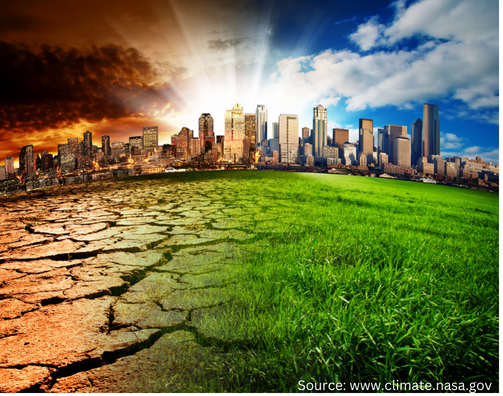As we navigate the intricate web of challenges in the 21st century, two seemingly disparate issues—climate change and inflation—are increasingly revealing an unexpected and profound connection. The impacts of climate change, driven by unsustainable energy practices and the depletion of natural capital, are reverberating through our economies, giving rise to inflationary pressures. This interplay between environmental crises and economic realities demands a closer examination, urging us to reconsider the way we produce and consume energy.
Climate change, the defining issue of our time, is disrupting ecosystems, intensifying extreme weather events, and altering the delicate balance of the planet. Concurrently, our reliance on fossil fuels for energy production continues to deplete natural capital, exacerbating these environmental challenges. The consequences of climate change are not confined to melting ice caps and changing weather patterns; they are infiltrating the very fabric of our economies.
Enter inflation—an economic phenomenon where the general price level of goods and services rises, leading to a decrease in the purchasing power of a currency. Traditionally, inflation has been attributed to factors such as increased demand, supply chain disruptions, or monetary policy decisions. However, a nuanced understanding of the current economic landscape reveals an unexpected player: climate change.

The depletion of natural capital and the escalating costs of production due to environmental degradation contribute significantly to inflationary pressures. As we persist in burning fossil fuels to meet our energy needs, the costs associated with resource extraction, transportation, and emissions regulations are on the rise. These costs are not only reflective of environmental stewardship but are also integral components of the production process, influencing the prices of goods and services.
Consider the scenario of a brick kiln, a fundamental element in construction and manufacturing. The energy-intensive process of firing bricks traditionally relies on non-renewable sources, contributing to both environmental degradation and economic strain. The costs associated with extracting and transporting raw materials, coupled with emissions regulations, directly impact the overall cost of production. As these costs soar due to environmental factors, businesses are forced to pass on the burden to consumers in the form of higher prices, thus contributing to inflation.
Moreover, the climate-induced disruptions to supply chains, such as extreme weather events affecting agriculture or resource extraction, add another layer to the inflation puzzle. The increasing frequency and intensity of these events can disrupt production cycles, leading to shortages and price volatility. This not only poses immediate challenges but also creates an environment of uncertainty that can further fuel inflationary pressures.
Addressing the link between climate change and inflation requires a holistic approach. Transitioning to renewable energy sources is not just an environmental imperative; it is an economic necessity. By investing in sustainable energy infrastructure, we not only mitigate the impacts of climate change but also create a more resilient and cost-effective energy system. The renewable energy sector, with its potential for innovation and job creation, offers a pathway to economic growth while simultaneously alleviating inflationary pressures associated with unsustainable energy practices.
In conclusion, the connection between climate change and inflation underscores the urgency of reevaluating our energy practices. The environmental toll exacted by burning fossil fuels is not only depleting natural capital but also inflating the costs of production, contributing to economic challenges. Embracing renewable resources is not just a climate-friendly choice; it is a strategic economic decision that can pave the way for a more sustainable and resilient future. As we grapple with the complexities of our era, recognizing and addressing these interconnected challenges is essential for charting a course towards a more sustainable and economically stable world.
